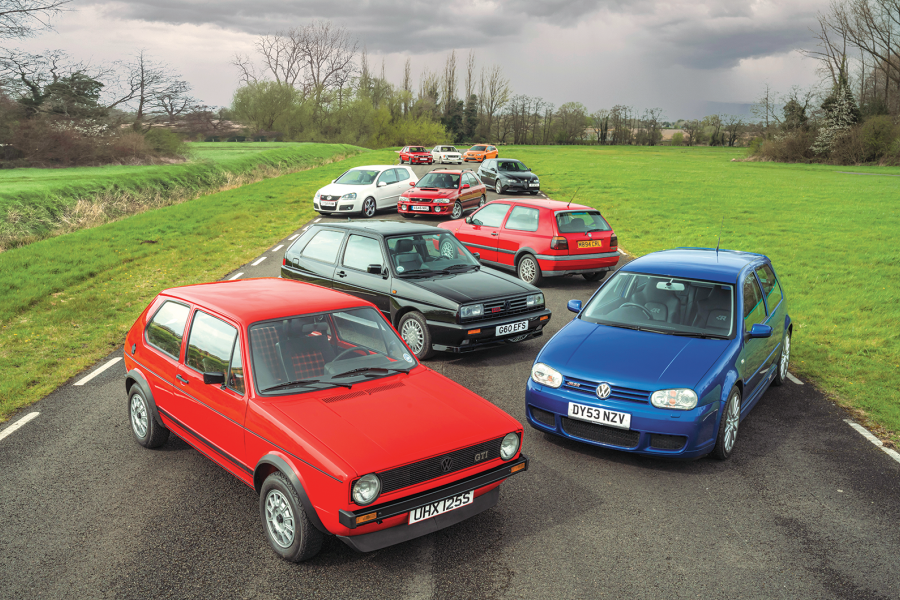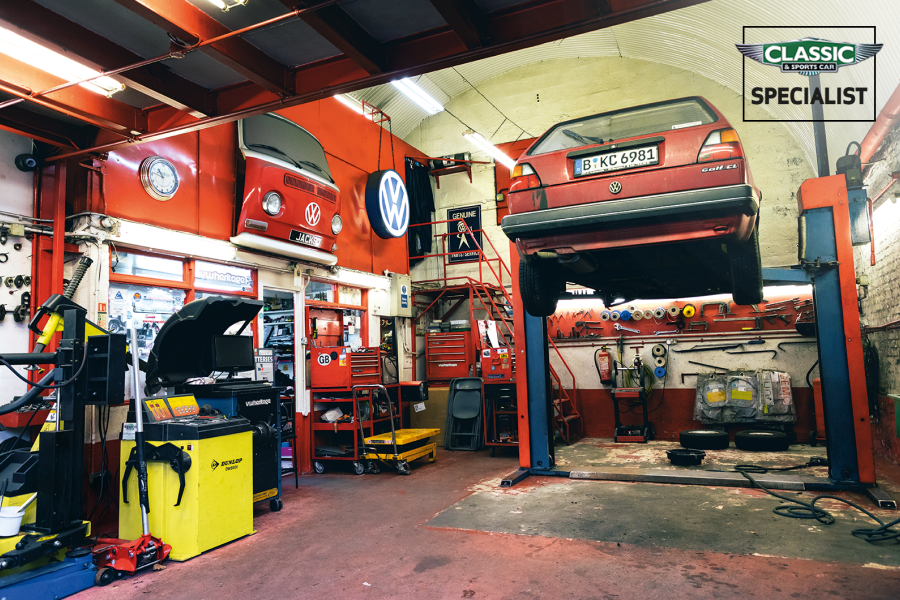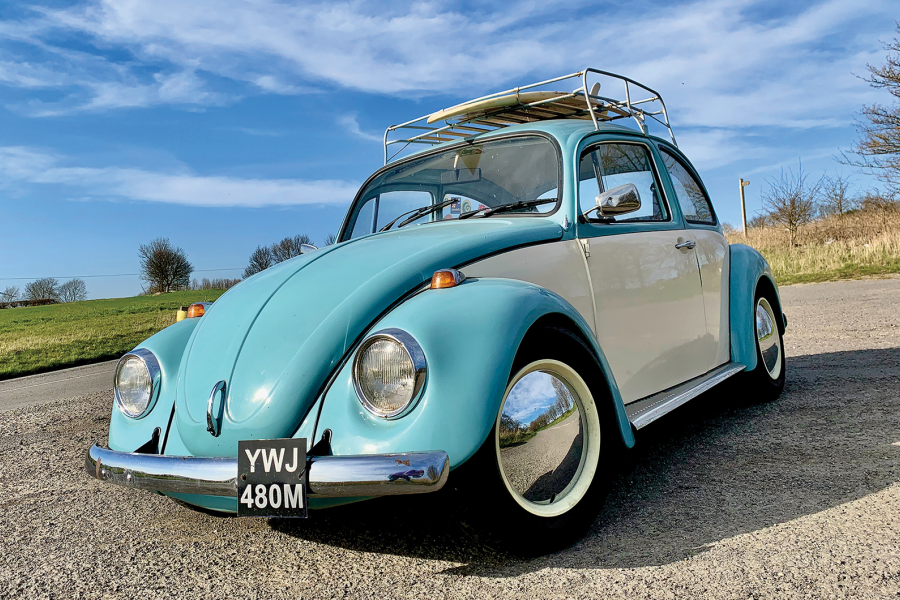The Karmann Ghia, in comparison, is far more laid-back in its power delivery and performance.
Where the French machine chatters (1500rpm), growls (3000rpm) then whines like a turbine (5000rpm), the German is noticeably quieter, leaving the characteristic rasp of the flat-four in its wake.
The fussy, frantic Panhard begs for revs, but the stolid, no-nonsense Volkswagen encourages a leisurely approach, relying on its greater capacity and torque to push you along. The result is more relaxed, less manic.
In the 24CT, you have to keep the crank spinning, stirring the car along with the gearbox.
Wraparound rear lights are a modern touch on this classic Panhard
The Karmann Ghia demands far fewer changes – each one is accompanied by a distinctive clunk-clonk that Beetle owners will instantly recognise – and feels as though it will take you to the end of the earth and back again, but it lacks the Panhard’s urgency.
In period, the 24CT was praised for its chuckability. You could apparently step the tail out at will and let it drift (the inner rear wheel invariable a couple of inches off the ground), bringing it back under control just as easily.
That’s not something you would be inclined to try in the rear-engined VW, but Autocar’s testers actually found that it was eminently controllable, and far from the wayward tail-snapper that you might expect.
In any case, at the sort of speeds most classic owners will stick to, both cars feel utterly benign in their manners.
The German car does offer lighter steering, though, the wheel of the front-drive Panhard weighting up noticeably through bends, while the Volkswagen also provides far superior braking.
The Panhard’s finned drums look lovely, but they were regularly criticised in period road-test reports and gave way in ’65 to an improved four-wheel disc set-up.
The rear-light design of the Volkswagen evolved over the years
After spending a day with these delightfully offbeat designs, I’m torn between the two.
As a practical proposition, the Karmann Ghia wins hands down and so its commercial success is more than justified.
It’s not particularly quick, although it’s a delightful thing and is bestowed with genuine beauty.
It really is gorgeous and I could never tire of its voluptuous curves.
But it’s a travesty – if not a surprise – that so few Panhards found buyers.
It was an expensive oddity in the UK – thanks to import duty, in 1964 it cost £200 more than a Big Healey! – but, with greater investment from Citroën, it could surely have achieved greatness.
What we are witnessing here is the handing over of the baton from one generation to the next: the death throes of the world’s first series motor manufacturer, alongside the eager newcomer that was carefully eyeing up the global market.
‘What we are witnessing here is the handing over of the baton from one generation to the next’
Which car would I take home? In a sense, they complement each other rather well.
The Panhard is perfect for flashing along routes nationales, where full advantage can be made of its admirably high cruising speed.
But when the traffic builds up, give me the more user-friendly Volkswagen. With its greater flexibility and lighter steering, it would make far more sense to city dwellers than the peaky Panhard, which would struggle to maintain its dignity.
Ultimately, though, I dearly want both.
Images: Malcolm Griffiths
Thanks to John Passfield, Panhard et Levassor Club GB; Joseph Denne, Karmann Ghia Owners’ Club GB
This was originally in our August 2016 magazine; all information was correct at the date of original publication
Factfiles
Panhard 24CT
- Sold/number built 1964-’67/28,651 (all)
- Construction tubular steel chassis, steel body
- Engine all-alloy, air-cooled ohv 848cc flat-twin
- Max power 60bhp @ 5800rpm
- Max torque 54lb ft @ 2600rpm
- Transmission four-speed manual, FW
- Suspension: front independent transverse leaf springs rear dead axle, torsion bars, Panhard rod; telescopic dampers f/r
- Steering rack and pinio
- Brakes drums all round (discs from ’65)
- Length 14ft ¼in (4273mm)
- Width 5ft 3¾in (1619mm)
- Height 4ft 1¼in (1245mm)
- Weight 1819lb (825kg)
- 0-60mph 23.9 secs
- Top speed 90mph
- Mpg 45
- Price new £1329 (1964)
Volkswagen Karmann Ghia
- Sold/number built 1955-’74/444,300 all Type 14s)
- Construction steel platform chassis, separate steel body
- Engine alloy-crankcase/head, iron-barrel, air-cooled ohv 1192cc flat-four
- Max power 30bhp @ 3700rpm
- Max torque 56lb ft @ 2000rpm
- Transmission four-speed manual, RWD
- Suspension transverse torsion bars, parallel trailing arms, telescopics; front anti-roll bar
- Steering worm and roller
- Brakes drums all round
- Length 13ft 7in (4140mm)
- Width 5ft 4in (1630mm)
- Height 4ft 4in (1325mm)
- Weight 1782lb (810kg
- 0-60mph 28.8 secs
- Top speed 73mph
- Mpg 35
- Price new £1010 (1964)
READ MORE
The award-winning Volkswagen Karmann Ghia that punches above its weight
Chic to chic: Volkswagen Karmann Ghia vs Renault Floride
On track in the unique DB created to win at Le Mans
Malcolm Thorne
Malcolm Thorne is a contributor to – and former Deputy Editor of – Classic & Sports Car





















